As the vibrant colors of autumn blanket the New England landscape, it’s the perfect time to embark on a moose-spotting adventure.
New England’s expansive forests and serene wilderness provide an ideal habitat for these majestic creatures, offering wildlife enthusiasts an unparalleled opportunity to observe them in their natural habitat.
Whether you’re a seasoned wildlife photographer or simply seeking a unique outdoor experience, knowing where to spot moose can greatly enhance your fall exploration.
In this guide on where to spot Moose around New England this fall, we’ll take you on a journey through the picturesque landscapes of New England, highlighting prime moose-watching locations and offering valuable tips for increasing your chances of encountering these magnificent animals.
From the tranquil forests of Maine to the remote marshlands of Vermont, each destination promises an unforgettable encounter with one of nature’s most iconic inhabitants.
Where to Spot Moose around New England This Fall
The crisp air, the changing leaves, and the promise of wildlife sightings make autumn an ideal time to explore the wilderness of New England.
If you’re planning a fall excursion and hoping to catch a glimpse of these majestic creatures, here are some prime locations to consider.
Maine

Maine is renowned for its vast forests and abundant wildlife, making it one of the best places in New England to spot moose. Head to Baxter State Park, particularly around the ponds and marshy areas, for excellent moose-viewing opportunities.
The park’s remote location and pristine wilderness create an ideal habitat for these large mammals. Additionally, the Moosehead Lake region, encompassing towns like Greenville and Jackman, is another hotspot for moose sightings.
Take a guided moose-watching tour or explore the backroads and logging trails on your own for a chance to encounter these magnificent animals.
New Hampshire
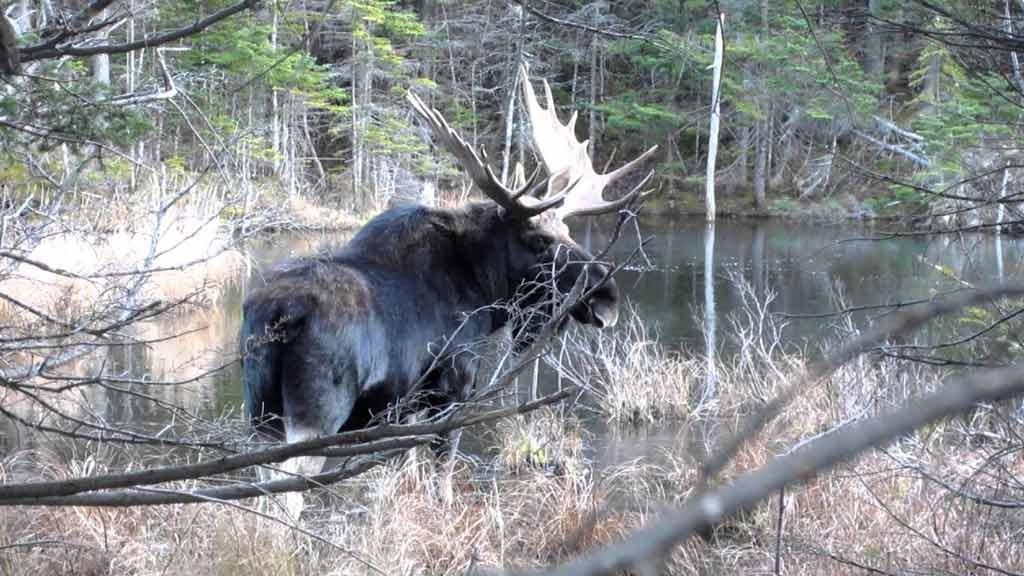
In New Hampshire, the White Mountains offer excellent moose-watching opportunities, especially in the early morning or late evening.
Explore the Kancamagus Highway, known for its scenic beauty, and keep an eye out for moose along the roadside or near water bodies.
The towns of Pittsburg and Berlin in the northern part of the state are also prime moose habitats. Consider embarking on a guided wildlife tour or hiking along designated trails to increase your chances of spotting these elusive creatures amidst the fall foliage.
Vermont
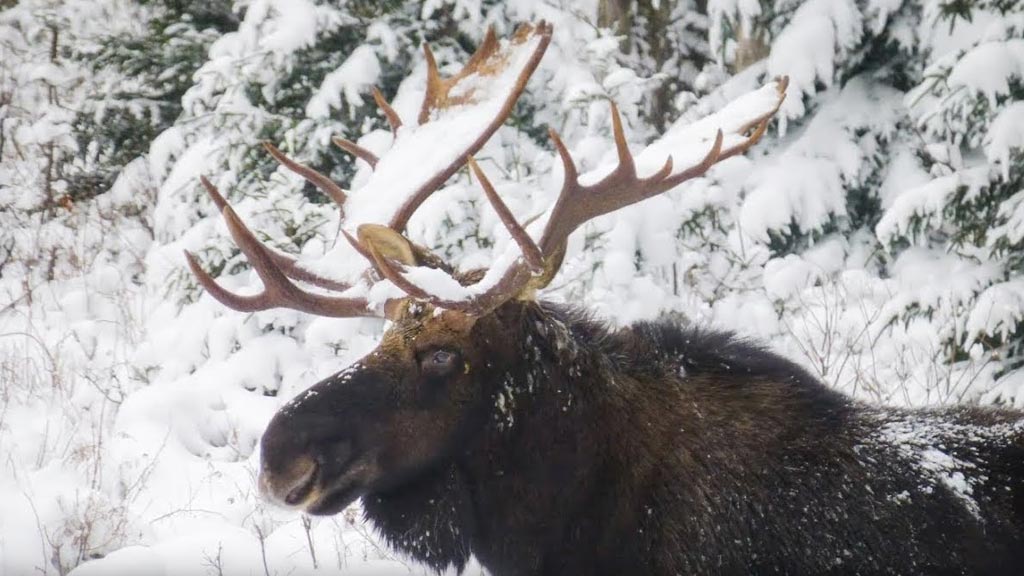
Vermont’s vast forests and mountainous terrain provide ample habitat for moose, particularly in the northeastern part of the state. The Northeast Kingdom region, including towns like Island Pond and Canaan, offers excellent moose-watching opportunities.
Explore the backroads and rural areas, keeping a lookout for moose feeding in wetlands or crossing the road.
Additionally, the Green Mountain National Forest and the area around Lake Willoughby are known for moose sightings, especially during the fall mating season.
Massachusetts
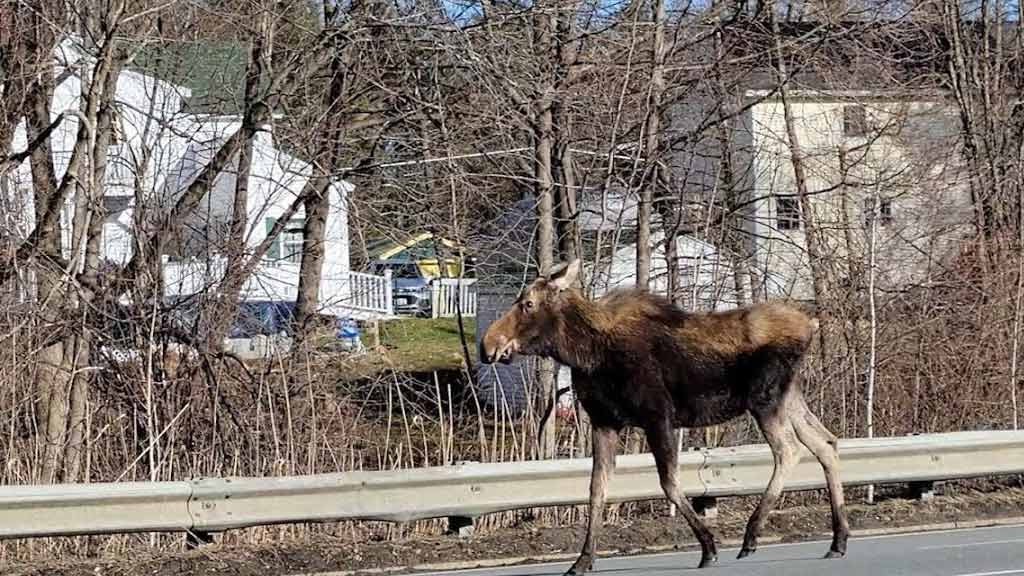
While moose sightings in Massachusetts are less common compared to other New England states, they do occur, particularly in the western and central parts of the state.
The Berkshire Mountains and the towns of Pittsfield and North Adams are among the areas where moose have been spotted.
Consider exploring state parks and wildlife management areas, such as Mount Greylock State Reservation and October Mountain State Forest, for a chance encounter with these elusive creatures amidst the fall foliage.
Connecticut

Connecticut may not be known for its moose population, but occasional sightings do occur, especially in the northern and northwestern parts of the state.
Explore the forests and rural areas around the towns of Norfolk and Colebrook, where moose have been reported in recent years.
While sightings may be rare, the remote wilderness of northern Connecticut offers a chance to glimpse these majestic animals in their natural habitat, particularly during the quieter months of fall.
10 Tips for Moose Watching
Moose watching is a popular activity for nature enthusiasts seeking to catch a glimpse of these majestic creatures in their natural habitat.
Whether you’re exploring the forests of Maine, New Hampshire, or other moose-populated regions, following these tips will increase your chances of spotting moose while respecting their habitat and ensuring your safety:
1. Research Prime Locations
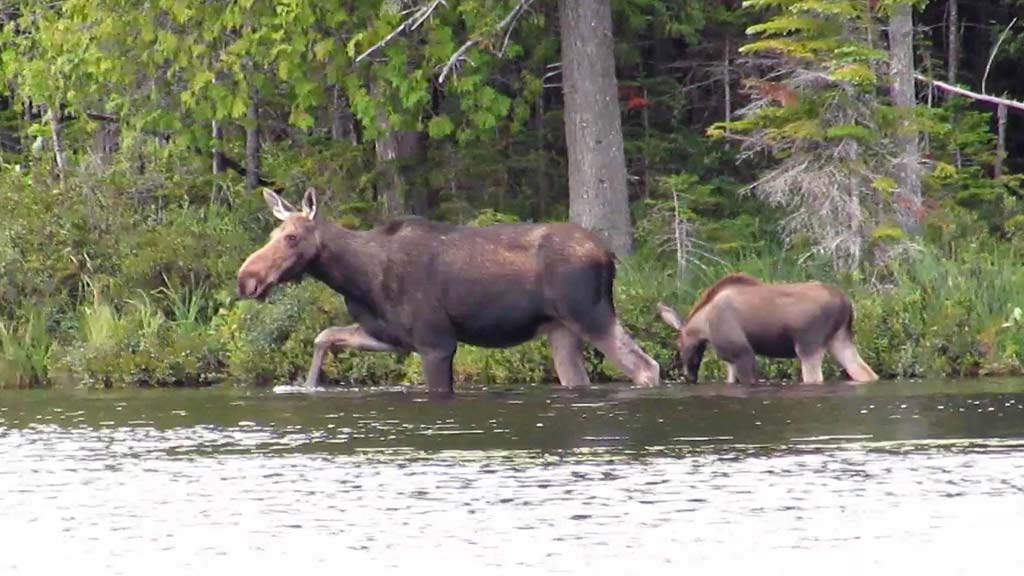
Start by researching prime moose-watching locations known for their dense moose populations. National parks, wildlife refuges, and remote wilderness areas are often ideal spots for moose sightings. Consider destinations such as Baxter State Park in Maine or the White Mountains of New Hampshire.
2. Timing is Key

Plan your moose-watching excursion during the early morning or late evening hours, as moose are most active during dawn and dusk. Be prepared to wake up early or stay out late to increase your chances of encountering these elusive creatures.
3. Choose the Right Season
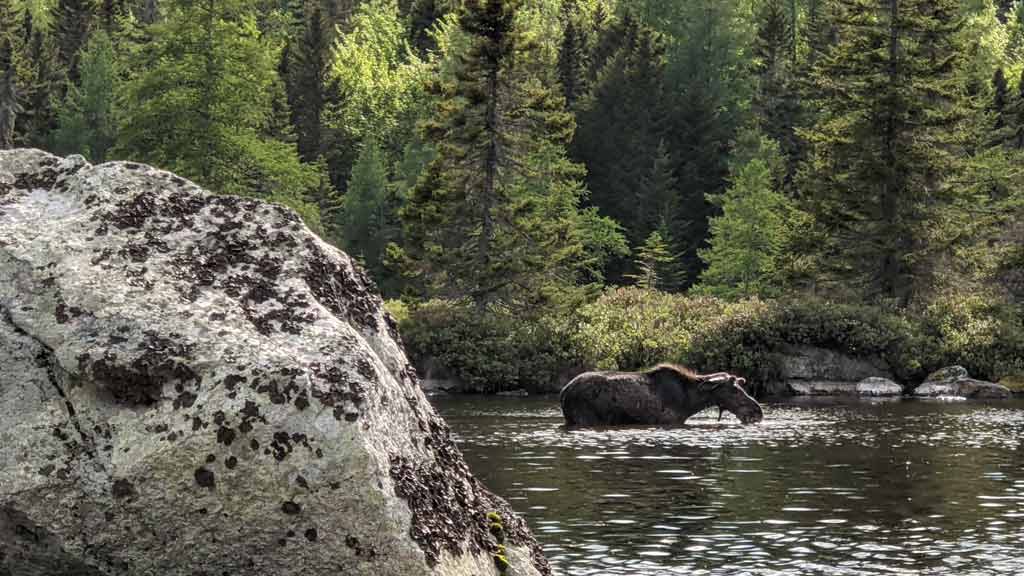
Moose are more active during certain seasons, particularly in the spring and fall. Springtime is ideal for spotting moose during the calving season, while fall offers opportunities to witness rutting behavior as males compete for mates.
Avoid visiting during the heat of summer when moose are more likely to seek shade and rest during the day.
4. Be Patient and Observant
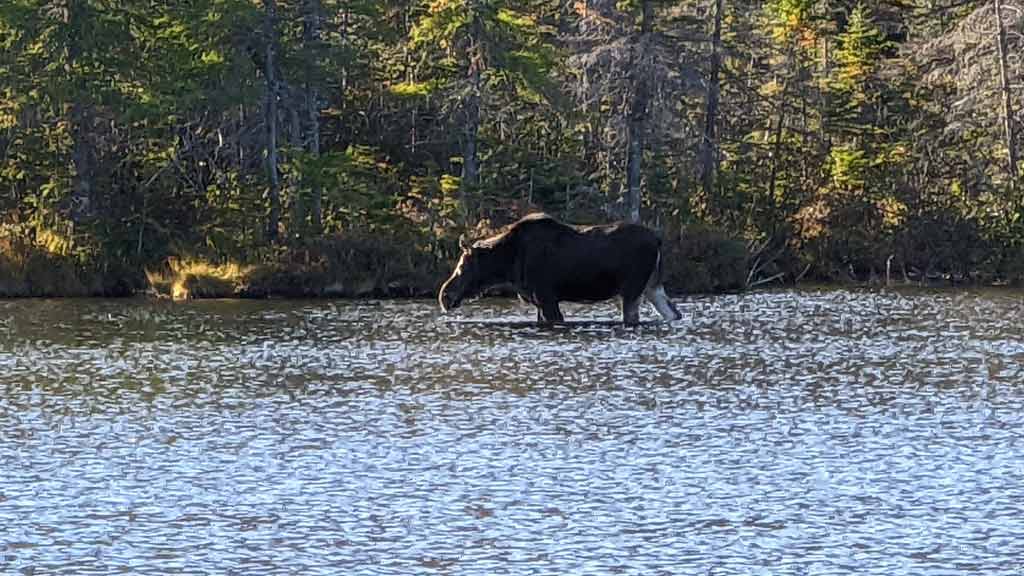
Moose watching requires patience and keen observation skills. Scan the surrounding landscape for signs of moose activity, such as tracks, droppings, or browse marks on vegetation. Be prepared to spend time quietly observing from a distance, as moose may be wary of human presence.
5. Use Binoculars or a Spotting Scope
Invest in a pair of high-quality binoculars or a spotting scope to enhance your moose-watching experience. These tools allow you to observe moose from a safe distance without disturbing them, providing detailed views of their behavior and features.
6. Stay Quiet and Still

Minimize noise and movement to avoid startling moose or alerting them to your presence. Move slowly and quietly, especially when approaching potential moose habitats such as marshes, ponds, or forested areas. Avoid sudden movements or loud noises that could frighten moose away.
7. Respect Moose Habitat
Practice Leave No Trace principles and respect moose habitat by staying on designated trails, avoiding off-trail travel, and minimizing your impact on the environment.
Keep a safe distance from moose and refrain from approaching or feeding them, as this can disrupt their natural behavior and pose risks to both moose and humans.
8. Be Mindful of Wildlife Etiquette

Maintain a respectful distance from moose and other wildlife to avoid causing stress or aggression.
Keep noise levels to a minimum and avoid using flash photography or bright lights, especially when observing moose at night. Respect moose’s personal space and give them plenty of room to move freely.
9. Stay Safe

Prioritize your safety and be aware of potential hazards when moose watching. Moose are wild animals and should be observed from a safe distance.
Keep a safe distance of at least 50 yards (150 feet) from moose, especially during mating season or when calves are present. Never approach or attempt to feed moose, as they can be unpredictable and potentially dangerous if provoked.
10. Be Flexible and Enjoy the Experience

Finally, embrace the unpredictability of wildlife watching and be flexible with your plans. While spotting moose is the ultimate goal, remember to enjoy the natural beauty and serenity of the wilderness.
Take time to appreciate the sights, sounds, and smells of the forest, and cherish the memories you create during your moose-watching adventure.
By following these tips and practicing responsible wildlife viewing techniques, you’ll increase your chances of spotting moose while minimizing your impact on their natural habitat.
FAQs
Are moose dangerous to encounter in the wild?
While moose are generally not aggressive unless provoked or threatened, they can be unpredictable and may charge if they feel cornered or startled.
It’s important to give them plenty of space and avoid approaching them too closely, especially during the mating season or if they have calves nearby.
What time of day is best for moose watching?
Moose are most active during the early morning and late evening hours, particularly around dawn and dusk. These times offer optimal lighting conditions for observing wildlife, and moose are more likely to venture out of cover to feed during these periods.
What should I do if I encounter a moose while hiking or exploring?
If you encounter a moose while hiking or exploring, remain calm and keep your distance. Back away slowly and avoid making sudden movements or loud noises that could startle the animal.
Give the moose plenty of space to move away on its own, and never attempt to approach or feed it.
Can I attract moose by using calls or scents?
While some wildlife enthusiasts may use moose calls or scents to attract these animals, it’s important to exercise caution and avoid disrupting their natural behavior.
Using artificial calls or scents can potentially stress or agitate moose, and it’s generally best to observe them from a distance without interfering with their habitat.
What should I do if I encounter a moose on the road while driving?
If you encounter a moose on the road while driving, slow down and give the animal plenty of space to cross safely. Moose are large and can be difficult to see, especially at night, so remain alert and vigilant, especially in areas known for moose activity.
Conclusion
With its breathtaking scenery and abundance of wildlife, New England beckons adventurers and nature enthusiasts alike to discover the wonders of moose watching in the fall.
As you traverse the region’s winding trails and secluded waterways, keep in mind the importance of respecting these animals’ habitat and observing them from a safe distance.
Remember, patience is key when it comes to wildlife observation, so take your time and immerse yourself in the tranquility of the wilderness.
Whether you’re drawn to the rugged beauty of Maine’s forests, the peaceful marshes of Vermont, or the scenic byways of New Hampshire, New England offers endless opportunities for moose sightings against the backdrop of autumn’s vibrant hues.
So, plan your itinerary, venture into the great outdoors, and let the magic of moose watching in New England captivate your senses this fall. So, grab your binoculars and get ready.
Laura Chassaigne